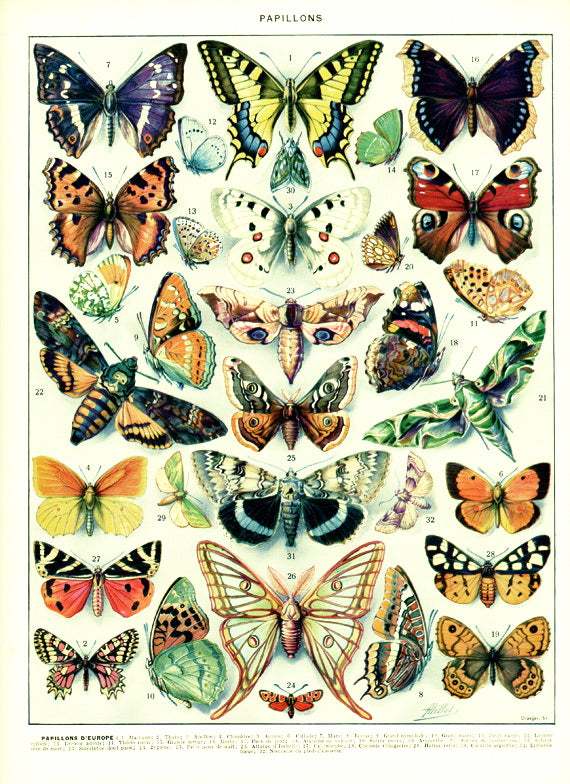Don't antique dictionaries have something magical about them? All the world's wonders crammed between those covers. Because yes, pre-internet, there was a time when printed media were the only source of knowledge.
Scientific accuracy was, of course, an important factor in a dictionary illustration. Publishers such as Larousse, whose illustrated dictionaries were an immense success between the 1890s and the 1950s, worked with the best illustrators in their fields.
For Natural Sciences, the reference artist was Adolphe Millot, a French painter and lithographer with a passion for Natural History. Not much is actually known about him, apart from his gorgeous work but what little there is is summarised right here.
Born in Paris in 1857, Adolphe Philippe Millot is recorded as having earned an Honorable Mention at the Salon des Artistes Français in 1891. A member of the Société entomologique de France he was the senior illustrator at the Muséum National d'Histoire Naturelle in Paris from 1911 until his death in 1921, where he recorded species and taught scientific painting.
Yet this little-known painter is the author of some of the most beautiful Natural History plates in French history.
His insects, butterflies, vegetables, fruit, plants, mushrooms, fishes, birds or animal plates capture perfectly the very essence of their subjects while remaining perfectly accurate from a scientific viewpoint.
His illustrations are all fascinating. Their intrinsic beauty lies in the combination of realistic details with delicate, lifelike, glowing colors and perfect composition. No wonder those plates are such a favorite with collectors.
Look at the delicacy of the colors in the fish scales on that fish print. No modern shimmering metallic inks existed at that time so those effects are all due to the painting technique, to Millot's mastery in choosing and layering graded transparent colors to give the impression of shimmers.
Capturing the movement is also key to the art of animal illustration. Isn't that shark perfectly lifelike?
And those fresh, plump, juicy vegetables. Don't you want to taste them all? And if you're an avid gardener, grow them in your very own kitchen garden? Nature's bounty!
Do you want to see more? Here are mushrooms, which look as if they were still on the forest's floor.
Adolphe Millot's prints and posters are still extremely popular today and it's easy to understand why.
Wouldn't they make perfect wall decor for your favorite little scientist's room or office?
So what's the one you'd like on your own walls?






